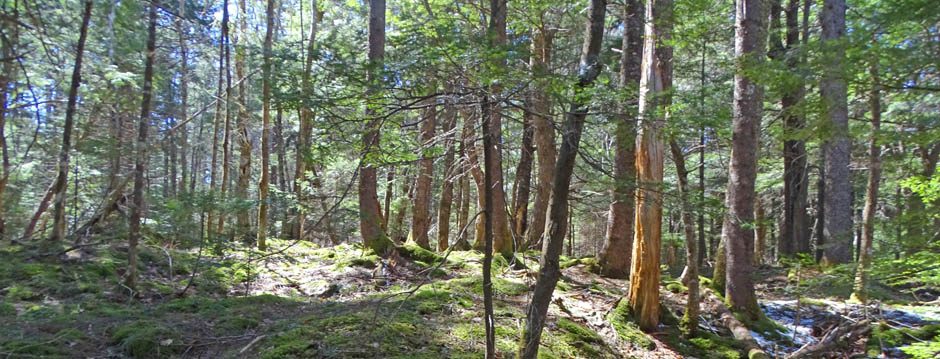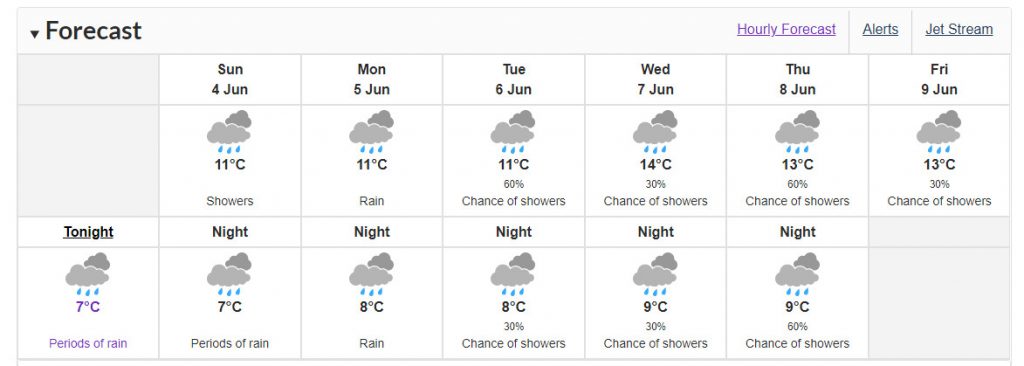Also View Fire Ecology on backlandscolaition.ca
European settlers torched our province, but in pre-European times, many centuries intervened between fires in the mixed Acadian forest which predominates in our province. In recent years, efficient fire control has reduced fire frequency to lower-than natural intervals. Climate warming may be changing it all again.
Fire Ecology (Journal)
“Fire Ecology is the international scientific journal supported by the Association for Fire Ecology. It publishes peer-reviewed articles on all ecological and management aspects relating to wildland fire. We welcome submissions on topics that include a broad range of research on the ecological relationships of fire to its environment, including, but not limited to: Ecology (physical and biological fire effects, fire regimes, etc.)/Fire management/Fire science and modeling/Fuel/Inter- or cross-disciplinary fire-related topics/Law and policy/Planning and risk management/Social sciences (geography, sociology, anthropology, etc.)/Technology transfer products.”
International Journal of Wildland Fire
nternational Journal of Wildland Fire publishes new and significant papers that advance basic and applied research concerning wildland fire. The journal welcomes papers aimed at understanding the basic principles of fire as a process; its interactions with the weather and climate; its impacts on ecology, hydrology, geomorphology, landscape carbon dynamics, the atmosphere, and society; modelling fire and its effects; or presenting information on how to effectively and efficiently manage fire…The journal has an international perspective, since wildland fire plays a major social, economic and ecological role in many regions of the world and strongly interacts with global climate change.”
Puktewei: Learning from Fire in Mi’kma’ki (Mi’kmaq Territory)
Shalan Joudry, MES thesis, Dalhosuie University, 2016. Throughout history humans have lived with fires on the land. Land fires over Turtle Island (North America) are influenced by climate, lightning, ecology, and cultural uses. Recently, non- Indigenous governments have sought information about wildfires for land management in relation to forestry, public safety and conservation. Current perspectives about fire behavior, fire ecology and fire history in Atlantic Canada are largely grounded in mainstream science. Little has been researched about Mi’kmaw relationship with fire (puktew) in Mi’kma’ki, the territory of the Mi’kmaq. This relationship is explored through academic inquiry based in culturally-relevant and community-centered priorities and ways of knowing. Learnings were sought from Elders/Knowledge Holders across three cultural districts in Nova Scotia. Physical, mental, emotional and spiritual relationships with puktew were described. These teachings demonstrate cultural connections to puktew and unique fire regimes in each district. Mi’kmaw research methodologies highlighted cyclical ways of learning and sharing stories back to community.
Living with Boreal Forest Fires: Anishinaabe Perspectives on Disturbance and Collaborative Forestry Planning, Pikangikum First Nation, Northwestern Ontario
A.M. Miller, PhD Thesis, University of Manitoba, 2010. “This research explores the understandings and relationships that the elders of one Anishinaabe community, Pikangikum First Nation, in northwestern Ontario, have with boreal forest fire disturbance.” Related: Talking about fire: Pikangikum First Nation elders guiding fire management. Miller et al., 2010 in Canadian Journal of Forest Research 40(12):2290-2301
Chapter Introduction: Fire Ecology Fire Ecology In a Nutshell (2 pages)
2-page document in the “Table Rock Curriculum” (U.S. Bureau of Land Management) Created 2010-03-23 Modified 2010-04-29).
Chapter 1 Introduction to Fire Ecology Across USA Forested Ecosystems: Past, Present, and Future Fire Ecology: The Details (30 pages)
Cathryn H. Greenberg et al., in C. H. Greenberg, B. Collins (eds.), Fire Ecology and Management: Past, Present, and Future of US Forested Ecosystems. Published Online 2021, available free as a PDF. Fire Ecology: The Details (30 pages)
A review of natural disturbances to inform implementation of ecological forestry in Nova Scotia, Canada
AR Taylor et al., 2020 in Environmental Reviews “we estimated that the mean annual disturbance rate of moderate- to high-severity fire ranged between 0.17% and 0.4%·year−1 (return interval of 250–600 years), depending on ecosystem type.”
Cloud-to-Ground Lightning in Canada: 20 Years of CLDN Data Cloud-to-Ground Lightning in Canada: 20 Years of CLDN Data
Bob Kochtubajda & William R. Burrows in Atmosphere-Ocean, 2020. NS very low levels compared to most of Canada.
Comparisons between wildfire and forest harvesting and their implications in forest management
D.J. McRae et al., Environ. Rev. 9: 223–260 (2001). PDF
Fifty years of wildland fire science in Canada
Sean C.P. Coogan et al., Can. J. For. Res. Vol. 51, 2021. PDF
Also See Fire Ecology – page on backlandscoalition.ca
Monoculture plantations fuel fires amid heat waves
J. Barquin et al., 2022. In Science
In Oregon Timber Country, a Town Buys the Surrounding Forests to Confront Climate-Driven Wildfires
By Grant Stringer on www insideclimatenews.org/, July 9, 2023. “The town government recently purchased a ring of privately owned timberland surrounding Butte Falls. Instead of harvesting the land—which could provide an immediate, short-term boon to the town economy—locals want to grow an older and biodiverse forest that they say will better protect the town from wildfires, while attracting outdoor tourism.”
Fire behaviour experiments in boreal spruce and aspen (Video)
fireresearchcanada Posted Nov 20, 2018. “On a remote section of a large ‘modified response’ wildfire in 2007 we conducted a couple of fire behaviour experiments. Ignition in the boreal shrubs carried into the spruce, to the mixedwood stand and then stopped abruptly at the edge of the leafed-out aspen stand.”
Regeneration of Forest and Barrens after the Spryfield Fire of April 30, 2009
Richard Beazley and David Patriquin, 2009. A set of photos illustrates the regeneration of vegetation over 16 months after an intense fire swept through forest and barrens in the vicinity of Spryfield, Nova Scotia on April 30, 2009. The fire destroyed twelve homes.
A Rare, Fire-Dependent Pine Barrens at the Wildland-Urban Interface of Halifax, Nova Scotia
Nick Hill and David Patriquin. 2014. A Rare, Fire-Dependent Pine Barrens at the Wildland-Urban Interface of Halifax, Nova Scotia. Annotated Slideshow presentation to the Wildland Fire Canada 2014 Conference, Halifax, N.S. Oct 6-9, 2014. 12 frames.
Modeling fire susceptibility to delineate wildland-urban interface for municipal-scale risk management
Whitman, E., Rapaport, E., and Sherren, K. 2013. Environ Manag 53:1427–1439.
Current and future wildfire risk in the peri-urban acadian Forest region.
Whitman, E. 2013. Master of Environmental Studies thesis, Dalhousie University.
Ellen Whitman and colleagues applied a spatially oriented fire modeling approach to examine “Future Wildfire Risk in the HRM Wildland-Urban Interface Under Climate Change” and “Urban Forests And Hazard Management: Trade-Offs Between Wildfire Risk And Benefits From Trees In The HRM Wildland-Urban Interface” Spryfield and Beaver Bank were used as case study areas.
Fire Effects Information System: Species Reviews
These “include information on plant, lichen, and wildlife species’ life history, ecology, and relationship to fire. They are available for more than 1,200 species occurring throughout the United States.” Use search tool on home page to lookup a particular species.
As wildfires burn in Alberta forests, what happens to the animals?
Naama Weingarten · CBC. June 3, 2023
Introduction to Fire Ecology Across USAForested Ecosystems: Past, Present, and Future
Cathryn H. Greenberg et al., In C. H. Greenberg, B. Collins (eds.), Fire Ecology and Management: Past,
Present, and Future of US Forested Ecosystems, Managing Forest Ecosystems
39, https://doi.org/10.1007/978-3-030-73267-7_1
Grooming forests could be making fires worse, researchers warn
ill English · CBC News. 2019 Glyphosate sprayed on forests kills slow-burning trees, leaving more flammable species vulnerable
From Social Media June 4:
MW: Over 40 mm of rain so far in the last 24 hours and the forecast is for seven more days of rain. This will put the fires out, though hummingbirds would like it a bit warmer…
VS: How long will it take the wildlife that have been lost to repopulate?
MW: I can only give a semi-informed opinion on this. Assuming you mean repopulate from the fires, it will depend on what has been lost. The plants will come back readily. In a year there will be green all through the burned area and after a few years some species (like blueberries and raspberries) will regain access to areas from which they had been excluded. Many other species will follow the regeneration of plant life, but some may have to wait a long time. Birds that require older forests (such as ovenbird or ruffed grouse) will be excluded from areas that were severely burned, but some forest dwellers may not be as badly affected … trees killed by crown fire may end up providing habitat for woodpeckers for example. The Tantallon fire will have added to the habitat damage that creation of the subdivisions had imposed, but in the long run roads have much greater impacts than fires. The huge fire in Shelburne County is different in this regard. It was big enough to have longer-lasting effects into the future. Some of that area has not been burned or greatly disturbed in over a hundred years and I think the fire-scars will remain in that region for several decades. I don’t know whether anything irreplaceable has been lost but the fire burned through a significant nature reserve (Quinns Meadow) and protected wilderness area (Bowers Meadows) so there could severe impacts. While it seems no people have died in these fires, a lot of other once-living beings lost their lives.
DP: RB and I followed regeneration of plant life after the Spryfield fire for a period, documented in photos. Recovery will be similar after these recent fires butthey were prob. more damaging overall, burned deeper into the ground, prob got some plant species/communities/habitats not well adapted to fires & they will take longer to recover. http://halifaxfieldnaturalists.ca/spryfieldfire/

